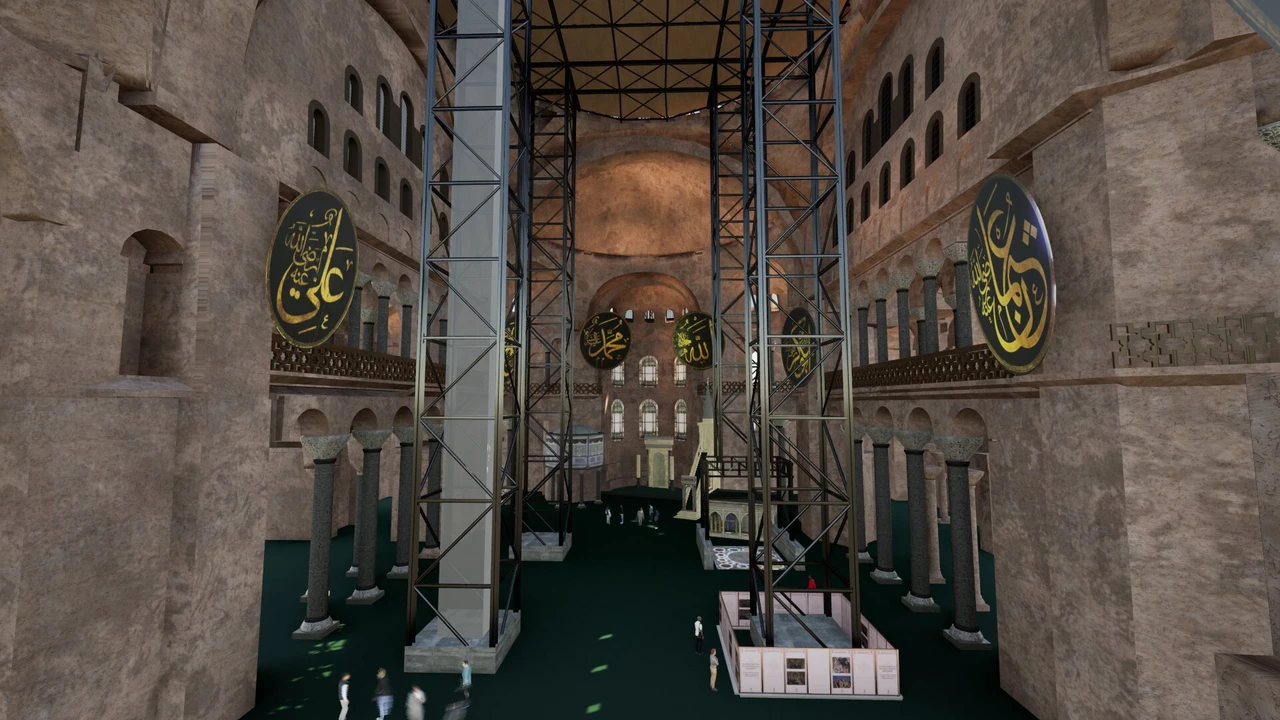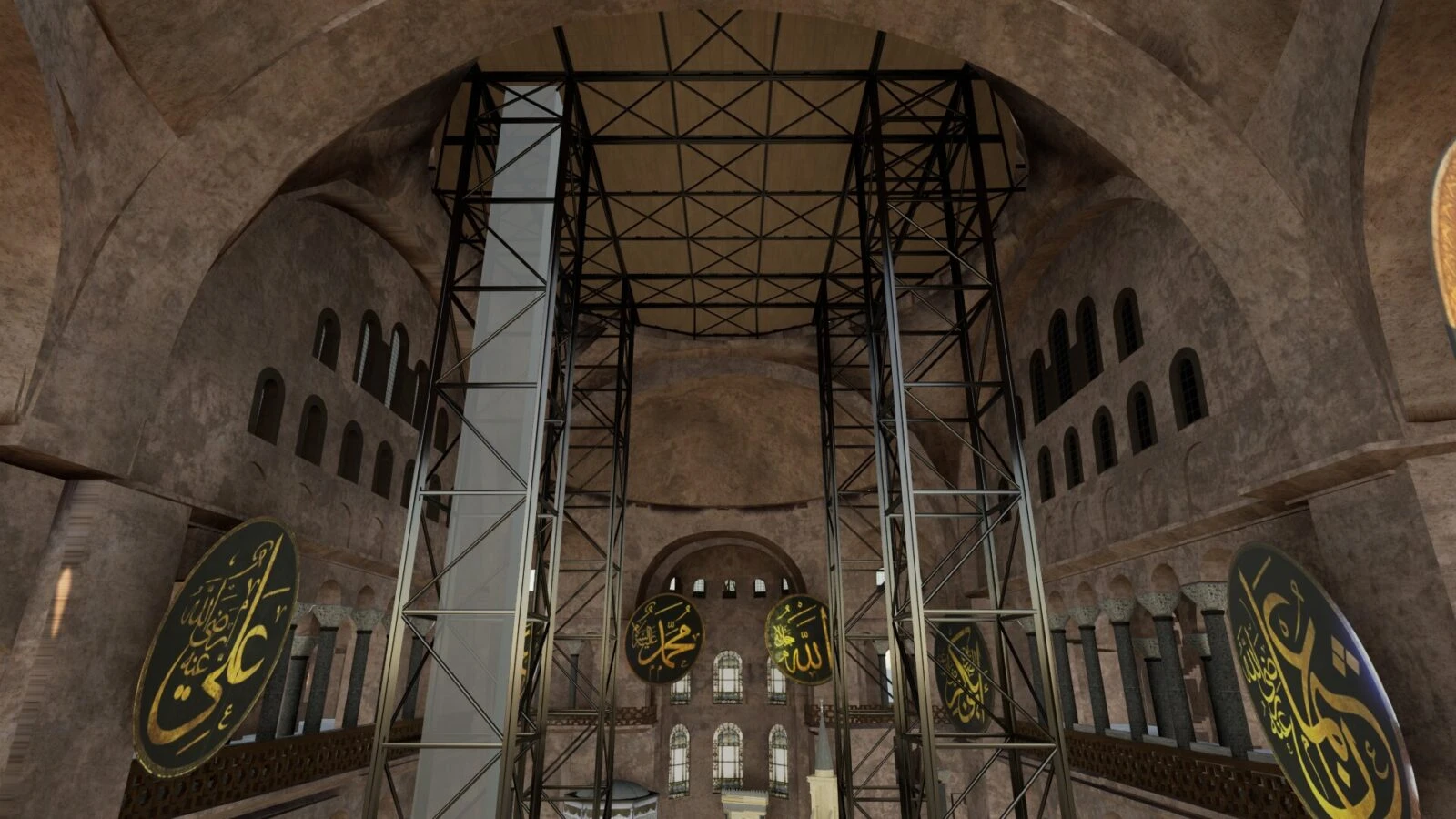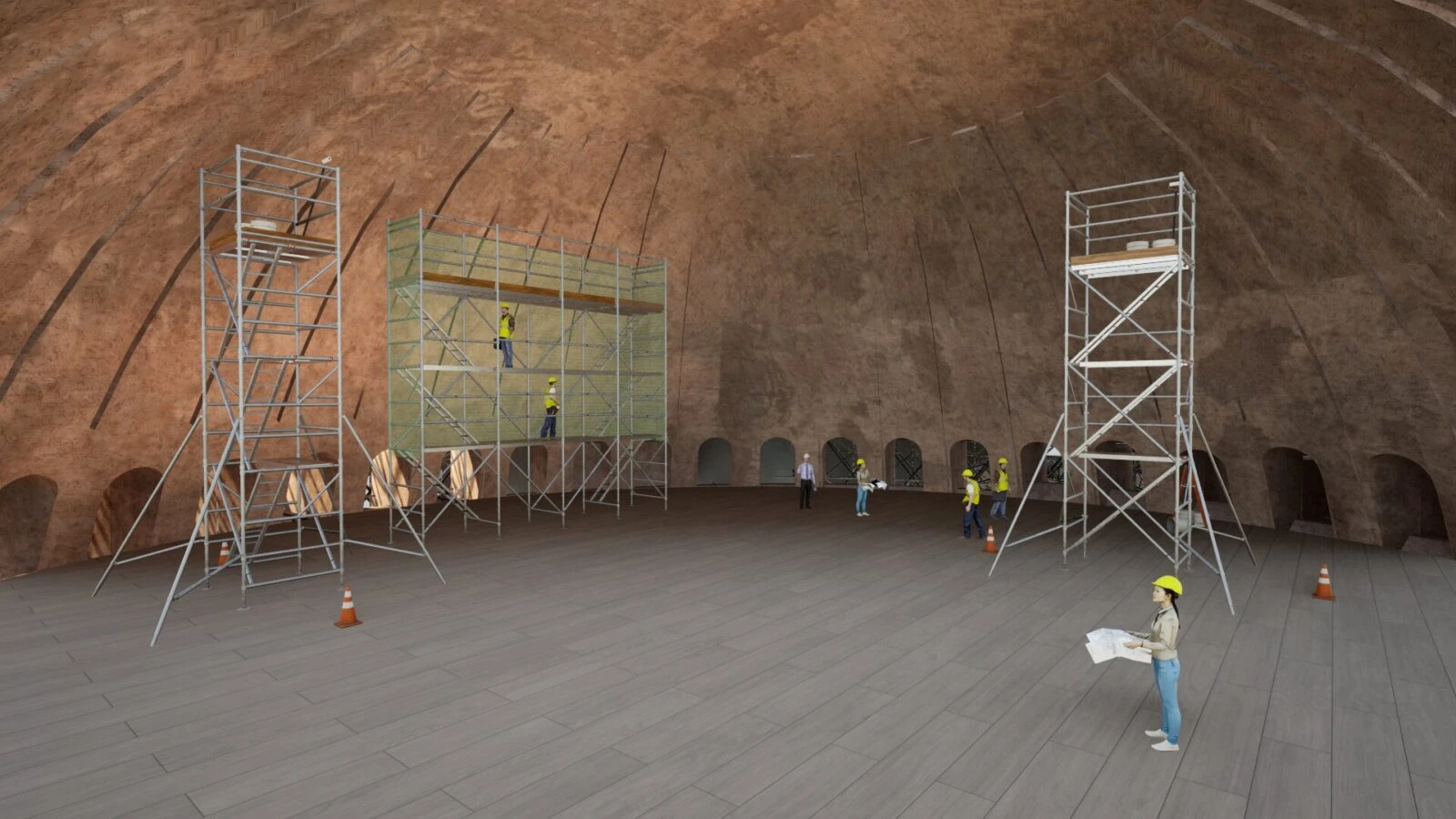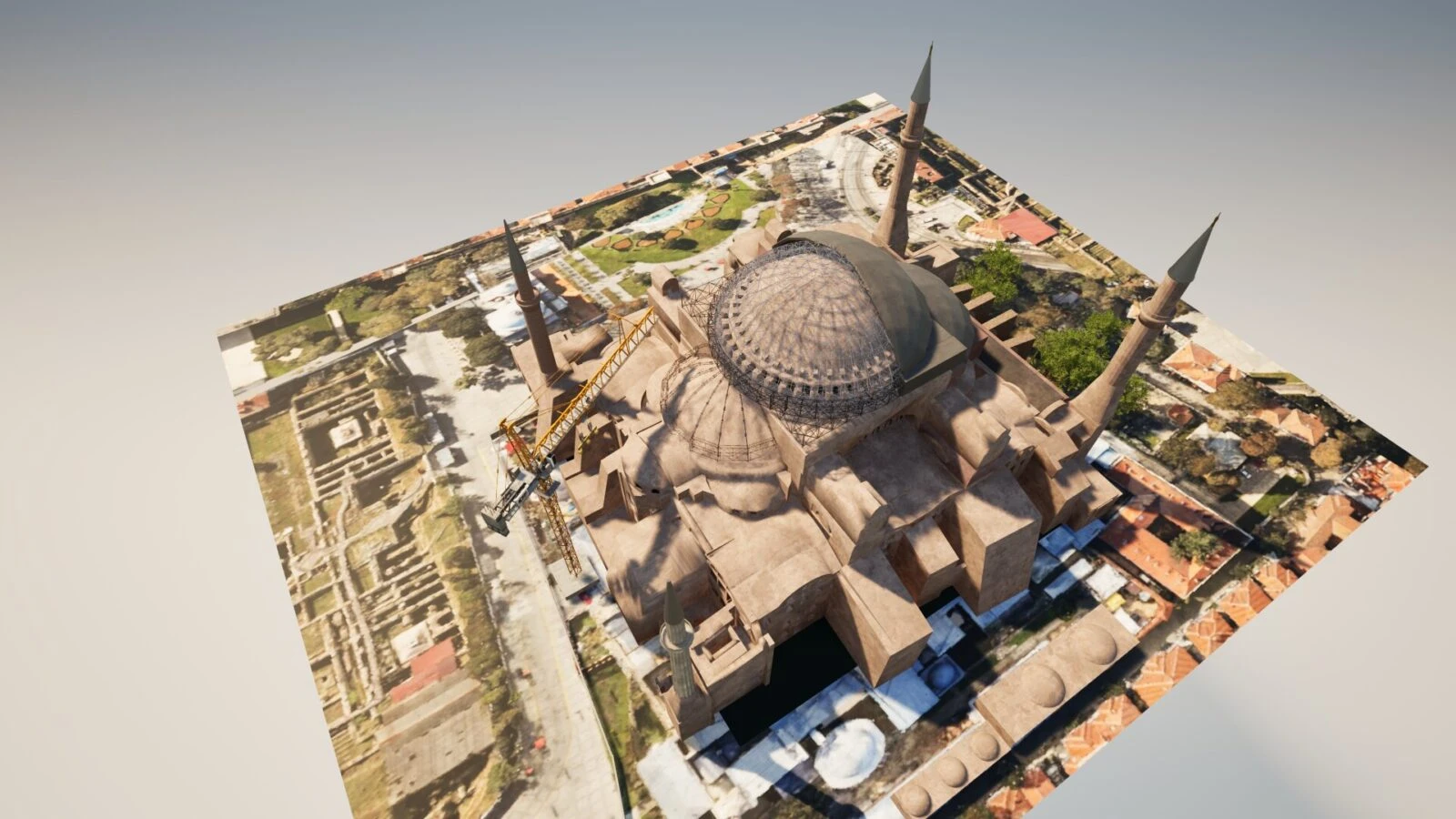Türkiye begins critical earthquake-safety restoration of Hagia Sophia
 3D project illustration of the extensive dome restoration at Hagia Sophia, Istanbul, Türkiye, April 14, 2025. (Photo via Ministry of Culture and Tourism)
3D project illustration of the extensive dome restoration at Hagia Sophia, Istanbul, Türkiye, April 14, 2025. (Photo via Ministry of Culture and Tourism)
Türkiye has launched a major new phase in its ongoing restoration of the nearly 1,500-year-old Hagia Sophia in Istanbul, aiming to protect the historic structure from future earthquakes.
The work will focus on reinforcing the main dome and half domes of Hagia Sophia—one of the world’s most iconic architectural wonders—using lightweight modern materials. Lead coverings will be replaced and the steel framework upgraded, while the mosque remains open to worshippers throughout the process.

Preparing for Istanbul’s long-feared earthquake
Mehmet Selim Okten, a construction engineer and academic at Mimar Sinan University, is part of the scientific council overseeing the project. He said the latest efforts mark the most comprehensive structural intervention in over 150 years.
“We have been carrying out intensive restoration efforts on Hagia Sophia and its surrounding structures for three years,” Okten said. “We are now focusing on the seismic safety of Hagia Sophia, especially in light of the expected Istanbul earthquake.”
In 2023, a devastating 7.8 magnitude earthquake struck southern Türkiye, killing more than 53,000 people and causing widespread destruction. While Istanbul was not affected, the catastrophe renewed fears of a similar disaster striking the city, which lies near major fault lines.
”We are preserving history and carrying Hagia Sophia into the future! 🕌
At the 1,486-year-old Hagia Sophia Grand Mosque, we continue our restoration and reinforcement work without interrupting worship. We have completed part of the work and are carefully proceeding with the remaining sections.
As part of this process, the main dome is undergoing the most extensive and comprehensive restoration in its history. The dome will be made more resistant to earthquakes, while the original structure will be meticulously preserved.
🔶 To protect the interior mosaics of the dome, the work will be carried out from the exterior surface.
🔶 The lead coverings will be removed, repaired, or replaced as needed.
🔶 To shield the structure from weather conditions and protect the mosaics, the dome will be temporarily covered with a steel construction and special tarp.
🔶 A steel platform supported by four main columns, each 43.5 meters high, will be installed to allow restoration work and worship to continue simultaneously.
With the motto “Worship will continue, history will be preserved,” we are committed to both protecting and keeping Hagia Sophia alive.”
Crane installed to accelerate renovations
A newly installed tower crane on the eastern facade of Hagia Sophia is set to expedite the restoration by transporting materials to higher sections of the structure.
Once the crane is operational, a protective frame system will be placed over the monument, allowing specialists to work safely while analyzing historical damage caused by fires and earlier quakes in the 10th and 14th centuries.
“This will allow us to academically examine the building’s layers while ensuring public safety,” Okten said.

A monument of global significance
Originally a church for 916 years, it was converted into a mosque by Sultan Mehmed II during the conquest of Istanbul in 1453, serving as a mosque for 482 years. In 1935, it opened as a museum following a decree from Mustafa Kemal Ataturk and his cabinet.
However, in 2020, it was converted back into a mosque under the decision of President Recep Tayyip Erdogan, reopening for Muslim worship.
Though the mosque is now fully active for worship, Hagia Sophia continues to welcome millions of visitors annually as a treasured cultural and architectural landmark.

Transparency and public engagement
Okten emphasized that the entire restoration process will remain open to public scrutiny. “We plan to keep the process transparent. Although it’s not clear when we’ll finish, the public will be able to monitor our progress,” he said.
“We have completed our work on the four minarets and the main structure. Now, for this unique cultural heritage—the domes—we are using modern, lightweight materials to maintain accessibility for the public.”
International support for preservation
Visitors to the site welcomed the latest initiative.
“Hagia Sophia is amazing; it’s one of the world’s most important monuments,” said Rupert Wegerif, a lecturer from Cambridge University.
“It seems really important that they are going to strengthen it in case of earthquakes and preserve it,” the lecturer added.



